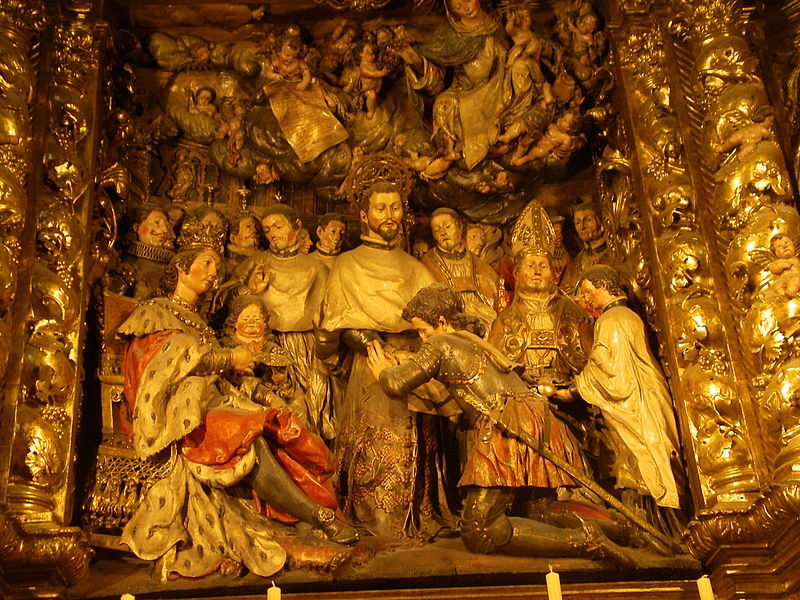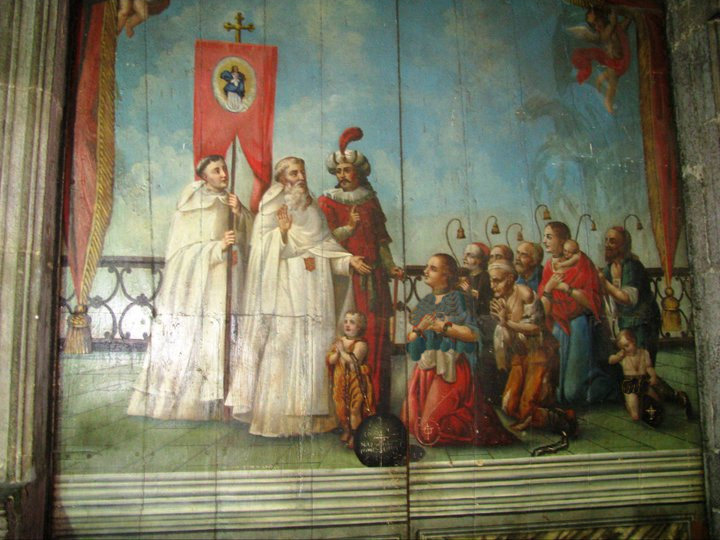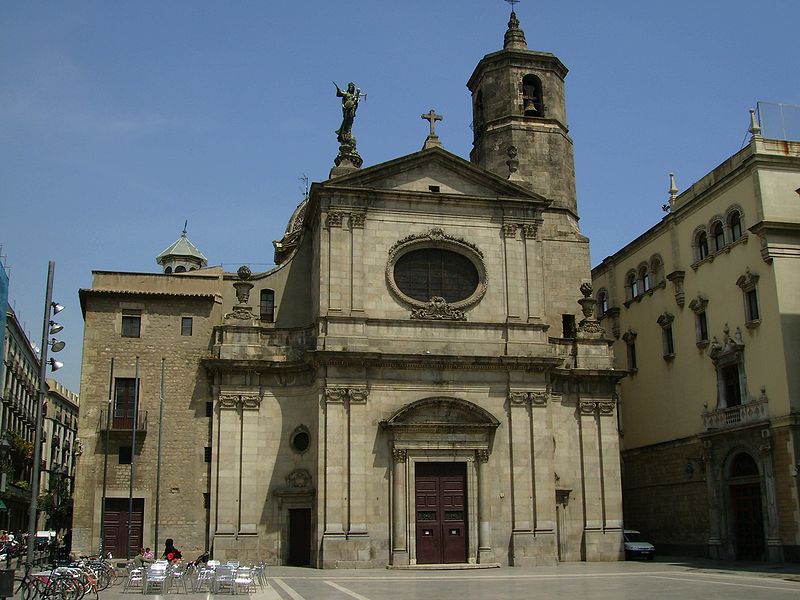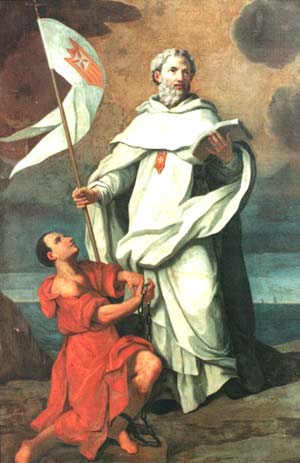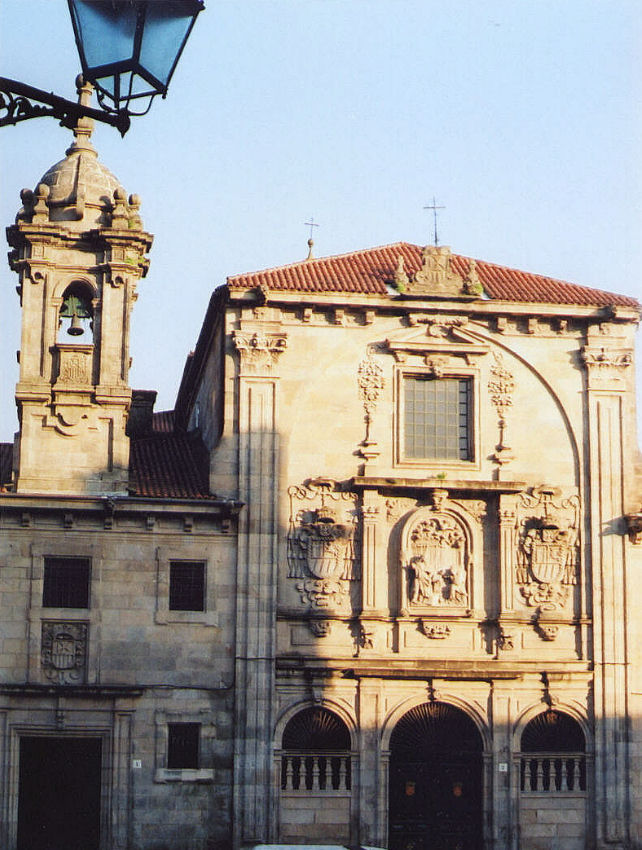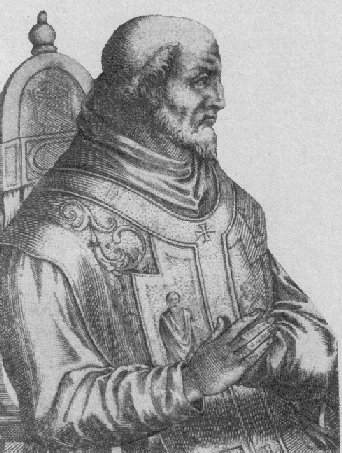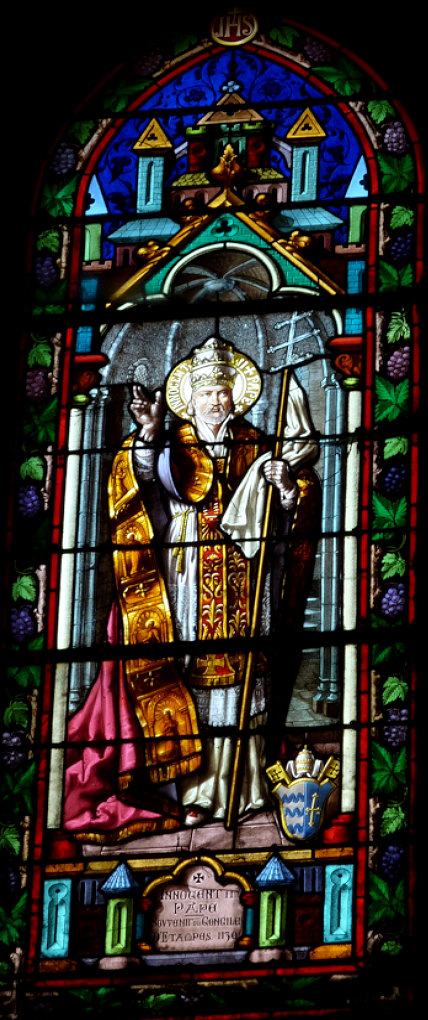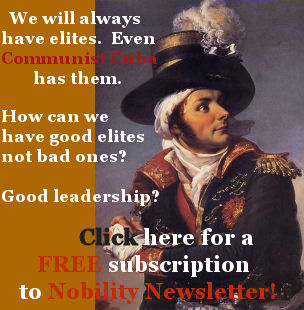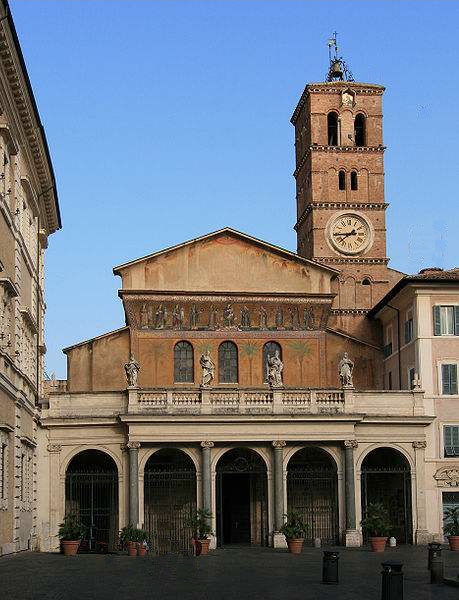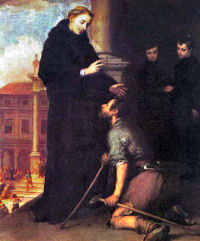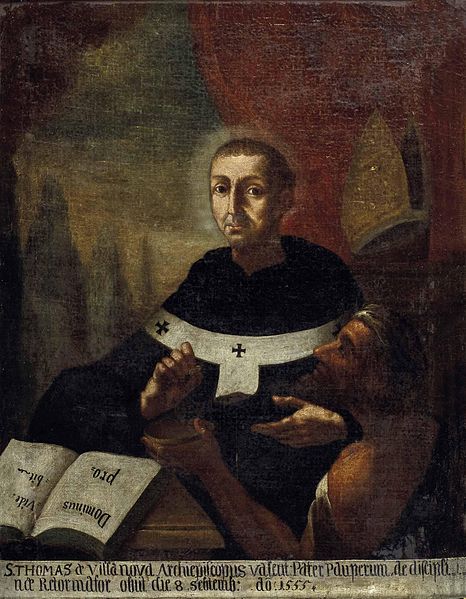Wednesday, September 30, 2015
Do you need a miracle in your life? Pray the Novena to Our Lady of the Rosary
Pray the Novena to Our Lady of the Rosary with me.
Several times in history when people have had recourse to God through the intercession of the Blessed Virgin Mary by praying Her Rosary, great miracles have happened and great victories have been won!
One of these fantastic victories occurred on October 7, 1571 during the battle of Lepanto near Greece where the Catholic fleet faced frightening odds to defend Christian Europe against the invading Turks. During the battle pope Saint Pius V knelt in his chapel in Rome praying the Holy Rosary.
Historians tell us that the holy pope received the news of the victory through divine inspiration and although far away from the battle scene all of a sudden announced to those around him that the Christian army was victorious.
… and this was way before email and text messages!
Anyway, upon receiving the news of the miraculous victory of the Christian army in Lepanto, the pope dedicated the 7th of October to the Feast of the Holy Rosary.
It is no wonder that our Lady at Fatima asked us to pray Her Rosary to obtain victory over the devil, and peace for the world. Now more than ever we need a great miracle and a great victory. Our Nation and our World are in desperate need of the Rosary. Just look around you, read the news and you need no more proof of what I am saying.
My dear friend, it is for this reason that I invite you to pray the Novena to Our Lady of the Rosary with me.
Let us start praying together this powerful Novena. Please remember to add to your Novena intentions all of the sinners who are in most need of conversion and who have no one to pray for them! Please pray for me and I promise my prayers for you and your loved ones in return!
A suggestion:
Many people struggle to commit to saying the Rosary every day, and this is understandable. Without a special grace this will not happen. So, if by chance you are struggling to say the Rosary I have a suggestion for you. Begin by pledging
Three Hail Marys every day and Our Lady will give you the grace to begin saying Her Rosary later on.
Click here: Three Hail Marys PLEDGE
Tuesday, September 29, 2015
Pray to the Archangel St. Michael

St. Michael is the model of the Christian warrior because of the fortitude which he showed by casting into hell the legions of damned spirits. He is the warrior of God who will not tolerate the divine Majesty to be challenged or offended in his presence, and who is ready to wield the sword at any time in order to crush the enemies of the Most High. He teaches us that it is not enough for a Catholic to behave well: it is also his duty to fight evil. And not just an abstract evil, but evil as it exists in the ungodly and in sinners.
For St. Michael did not cast evil into hell as a principle, a mere conception of the intellect, nor are principles and concepts susceptible to be burned by eternal fire. It was Lucifer and his minions that the Champion of the Almighty cast into hell, as he hated the evil that existed in them and which they loved.
We live at a time of profound religious liberalism. Few Christians have an inkling that they belong to a Church militant, as militant on earth as St. Michael and the faithful Angels were militant in heaven. We also should know how to crush the insolence of wickedness. We too must tenaciously counter the adversary by attacking him and rendering him powerless.
In this struggle, St. Michael should not just be our model but our help. The fight between St. Michael and Lucifer has not ceased but continues throughout the ages. He helps all Christians in the battles they wage against the power of darkness.
790,190 people petition the Pope to reaffirm Catholic teaching on marriage and the family at the Synod
Rome, 29/9/2015 -- This morning the Filial Appeal to Pope Francis on the future of the family was delivered as a result of a signature campaign in 178 countries.
In view of the opening of the Ordinary Synod on the Family, the 790.190 signatories— including 202 cardinals, archbishops and bishops—ask Pope Francis to say “a clarifying word” to dissipate the “widespread confusion arising from the possibility that a breach has been opened within the Church that would accept adultery—by permitting divorced and then civilly remarried Catholics to receive Holy Communion—and would virtually accept even homosexual unions when such practices are categorically condemned as being contrary to Divine and natural law”.
Only an intervention from the highest authority can help the disoriented faithful to see through the confusion that has been created over the years and that has become much worse in our days.
The spokesman of this initiative, Tommaso Scandroglio, professor of Ethics and Bioethics in the European University of Rome commented that the Filial Appeal “has had widespread repercussions in the Italian and International press”. He added “the repercussions in the mass media, the number of signatures collected and the number of personalities who have signed indicate that a substantial number of believers are very worried about certain theological tendencies present in the Church today”.
“The initiative—according to Scandroglio—takes place constructively amidst the climate of discussion and dialogue regarding these subjects. An example is the handbook Preferential Option for the Family—100 Questions and Answers relating to the Synod, that has been distributed along with the collection of signatures. It aims to spread the teaching of the Catholic Magisterium on these matters. Tens of thousands of copies of the handbook, authored by three bishops, have been requested from all over the world”.
Amongst the many signers of the Filial Appeal we highlight, in the ecclesiastical sphere: Cardinal Jorge Medina Estévez, prefect emeritus of the Congregation for Divine Worship; Cardinal Geraldo Majella Agnelo, former primate of Brazil and secretary emeritus of the Congregation for Divine Worship in Rome; Cardinal Gaudencio Rosales, Archbishop Emeritus of Manila; the bishops of the Military Services of the United States and Brazil, respectively Archbishops Timothy Broglio and Fernando Guimaraes. The President of the Episcopal Conference of Madagascar, The Most Rev. Désiré Tsarahasana, Archbishop of Toamasina. Prelates who direct large diocese such as Ramón Arguelles, Archbishop of Lipa in the Philippines (2.700.000 faithful); the Archbishop of Tucumán, Argentina, Alfredo Zecca (over one million faithful); The Most Rev. Aldo di Cillo Pagotto, Archbishop of Paraíba, Brasil, (over one million faithful) and the Archbishop of Manizales, in Colombia, Gonzalo Restrepo (over 800,000 Catholics). In Africa, we can mention the diocese of Maputo, Mozambique, with more than 1,200,000 Catholics, where both the current Archbishop Francis Chimoio and his predecessor Cardenal Alexandre dos Santos have signed. In Asia, amongst the signatories are the Archbishop of Astana, Kazakhstan, Tomasz Peta and the Archbishop of Trivandrum in India, Calis Soosa Pakiam. There are several signatories amongst European archbishops and bishops including the eparchs and bishops from the Greek Catholic rites.
In the political sphere some of the signatories are: Dr. Alejandro Ordóñez Maldonado, Procurator General of the Republic of Colombia; Rick Santorum, former US Senator; H.I.R.H. Dom Luiz de Orleans-Braganza, Head of the Imperial House of Brazil; members of the European Parliament Anna Zaborska (Slovakia) and Ruza Tomasic (Croatia).
Signatories from the academic world include members of the Pontifical Academy for Life: Josef Seifert, former President of the International Academy of Philosophy; Luke Gormally, Director Emeritus of The Linacre Centre for Healthcare Ethics; and Wolfgang Waldstein, professor emeritus of the University of Salzburg. Other university personalities include Professor Stephan Kampowski of the Pontifical John Paul II Institute for Studies on Marriage and Family, as well as Professor Massimo de Leonardis, Director of the Department of Political Sciences at the Catholic University of the Sacred Heart – Milan.
Many signatories are leaders of pro-family and pro-life movements from every continent.
Monday, September 28, 2015
The Blessed Mother With Sword in Hand

You may be pleasantly surprised to know that there are many traditional statues of the Blessed Mother with a weapon of some sort in her hand. In the photo above, the Blessed Mother is on a horse and she is holding a sword in her right hand in a menacing manner.
This statue is in Sicily, and it is called Madonna delle Milizie, or the Madonna of the Militias in English. This is a loose translation from the Italian.
The origins of this fighting Virgin go back to 1091, when the Muslims invaded Sicily and the Catholic population prayed for deliverance to the Mother of God, who obliged their prayers by appearing on a warrior steed and putting the Muslim army to flight.
How important is the practice of modesty?
We must practice modesty,
not only in our looks, but also in our whole deportment,
and particularly
in our dress, our walk, our conversation, and all similar actions.
St. Alphonsus Maria de Liguori
The Power of a Picture

“What is that?” Asked a curious voice as America Needs Fatima custodian Jose Ferraz stepped into the hotel elevator in Altamonte Springs, Florida. “This is the Pilgrim statue of Our Lady of Fatima,” replied Mr. Ferraz, “I take Her to visit people in their homes to spread the Fatima message.” He then handed the woman, who was a maid at the hotel, America Needs Fatima’s most popular picture. “This is a picture of Her.” The woman gasped. “I know that picture! It inspired a conversion.” She then asked excitedly, “Do you have a minute to hear the story?”
Order your free 8x10 picture of Our Lady of Fatima
As Mr. Ferraz listened, he learned that the woman, Maria Vegra, had a 22-year old son who had recently passed away after three weeks in the hospital due to a fatal injury received in a car accident. While in the hospital, a priest would visit him every day to administer Holy Communion. The priest consistently offered the sacrament to the neighboring patient of Maria’s son, another young man who was also in critical condition. The young man would say, “No. I don’t believe in God.” But the priest continued to offer salvation. “Let me hear your confession and give you Holy Communion and Last Rights,” the priest said, “it will save your soul and get you to heaven.” Time after time, the young man stubbornly refused.
 During the weeks of hospitalization and fruitless medical treatments, Maria had taken her son a picture of Our Lady of Fatima a friend had given her from an America Needs Fatima mailing.
During the weeks of hospitalization and fruitless medical treatments, Maria had taken her son a picture of Our Lady of Fatima a friend had given her from an America Needs Fatima mailing.
She knew Our Lady’s watchful gaze would give her son peace in his last days. The day after she placed Our Lady’s picture at the foot of her son’s bed, she heard the voice of his stubborn neighbor: “please,” he said, “bring the picture closer to me. I want to look at the Lady.”
Surprised but willing, Maria placed the picture in the middle of the two suffering men.
After three days of letting the nearby picture of Our Lady touch his heart as he gazed into Her eyes, the suffering patient relented. “Please,” he called out, “bring me the priest. I want to receive the sacraments.”
A few days later, the young man died a Catholic. With a simple picture of Our Lady of Fatima, God touched a heart and saved a soul.
By Catherine Ferdinand
Friday, September 25, 2015
How to drive the devil away…
When tempted, invoke your Angel.
He is more eager to help you than you are to be helped!
Ignore the devil and do not be afraid of him:
he trembles and flees at the sight of your Guardian Angel.
St. John Bosco
Sins of the Tongue -- The Evil of Slander
A lesson from Saint Philip Neri
One day a lady presented herself to Saint Philip Neri and confessed of being given to slander. “Do you frequently fall into this fault?” inquired the Saint. “Yes Father, very often,” replied the lady. “My child,” said the Saint “your fault is great but the mercy of God is still greater. For your penance, do as follows: Go to the nearest market and purchase a chicken just killed and still covered with feathers. Then walk on, plucking the bird as you go. When your walk is finished, return to me.”

Great was the lady’s astonishment at receiving so strange a penance. She replied, “I will obey, Father.” Accordingly, she bought the fowl and set out on her journey plucking it as she went. In a short time she returned, anxious to tell of her exactness in accomplishing her penance and desirous to receive some explanation.
“Ah,” said the Saint. “You have been very faithful to the first part of my command. Now do the second part. Retrace your steps and gather up one by one all the feathers you have scattered.”
“But Father!” exclaimed the poor woman, “That is impossible. The wind carried them in every direction, how can I now recover them?”
“Well my child,” replied the Saint. “Your words of slander are like the feathers which the wind has scattered. They have been wafted in many directions. Call them back now if you can. Go and sin no more.” History does not tell if the lady was converted but it is probable. One should be a great sinner not to profit by the Saint’s lesson.
Adapted from The Congregation of Holy Cross’s Ave Maria (Notre Dame, Ind. 1879), Vol. XV, No. 28, 20.
Thursday, September 24, 2015
U.S. Marine Saved by Saint Michael
This is the story of a Marine wounded in Korea in 1950. Writing to his mother, he told her of a fascinating encounter he experienced in the war. Father Walter Muldy, a U.S. Navy chaplain who spoke to the young Marine and his mother as well as to the outfit commander, always affirmed the veracity of this narrative.
We heard it from someone who read the original letter and retell the story here in all its details and in the first person to better convey some of the impact it must have had when first told by the son to his mother.
- Click here to print the novena to Saint Michael
- Michael, Michael of the Morning Prayer
- Saint Michael Chaplet
- Prayer to Saint Michael
- Video: Where Saint Michael Appeared
Dear Mom,
I am writing to you from a hospital bed. Don’t worry, Mom, I am okay. I was wounded, but the doctor says that I will be up in no time.
But that’s not what I have to tell you, Mom. Something happened to me that I don’t dare tell anyone else for fear of their disbelief. But I have to tell you, the one person I can confide in, though even you may find it hard to believe.
You remember the prayer to Saint Michael that you taught me to pray when I was little:“Michael, Michael of the morning,…” Before I left home for Korea, you urged me to remember this prayer before any confrontation with the enemy. But you really didn’t have to remind me, Mom. I have always prayed it, and when I got to Korea, I sometimes said it a couple of times a day while marching or resting.

Well, one day, we were told to move forward to scout for Commies. It was a really cold day. As I was walking along, I perceived another fellow walking beside me, and I looked to see who it was.
He was a big fellow, a Marine about 6’4” and built proportionally. Funny, but I didn’t know him, and I thought I knew everyone in my unit. I was glad to have the company and broke the silence between us:
“Chilly today, isn’t it?” Then I chuckled because suddenly it seemed absurd to talk about the weather when we were advancing to meet the enemy.
He chuckled too, softly.
“I thought I knew everyone in my outfit,” I continued, “ but I have never seen you before.”
“No,” he agreed, “I have just joined. The name is Michael.”
“Really?! That’s mine, too.”
“I know,” the Marine said, “Michael, Michael of the morning….”
Mom, I was really surprised that he knew about my prayer, but I had taught it to many of the other guys, so I supposed that the newcomer must have picked it up from someone else. As a matter of fact, it had gotten around to the extent that some of the fellows were calling me “Saint Michael.”
Then, out of the blue, Michael said, “There’s going to be trouble
ahead.”
I wondered how he could know that. I was breathing hard from the march, and my breath hit the cold air like dense clouds of fog. Michael seemed to be in top shape because I couldn’t see his breath at all. Just then, it started to snow heavily, and soon it was so dense I could no longer hear or see the rest of my outfit. I got a little scared and yelled, “Michael!” Then I felt his strong hand on my shoulder and heard his voice in my ear, “It’s going to clear up soon.”
It did clear up, suddenly. And then, just a short distance ahead of us, like so many dreadful realities, were seven Commies, looking rather comical in their funny hats. But there was nothing funny about them now; their guns were steady and pointed straight in our direction.
“Down, Michael!!” I yelled as I dove for cover. Even as I was hitting the ground, I looked up and saw Michael still standing, as if paralyzed by fear, or so I thought at the time. Bullets were spurting all over the place, and Mom, there was no way those Commies could have missed at that short distance. I jumped up to pull him down, and then I was hit. The pain was like a hot fire in my chest, and as I fell, my head swooned and I remember thinking, “I must be dying…” Someone was laying me down, strong arms were holding me and laying me gently on the snow.
Through the daze, I opened my eyes, and the sun seemed to blaze in my eyes. Michael was standing still, and there was a terrible splendor in his face. Suddenly, he seemed to grow, like the sun, the splendor increasing intensely around him like the wings of an angel. As I slipped into unconsciousness, I saw that Michael held a sword in his hand, and it flashed like a million lights.
Later on, when I woke up, the rest of the guys came to see me with the sergeant.

“How did you do it, son?” he asked me.
“Where’s Michael?” I asked in reply.
“Michael who?” The sergeant seemed puzzled.
“Michael, the big Marine walking with me, right up to the last moment. I saw him there as I fell.”
“Son,” the sergeant said gravely, “you’re the only Michael in my unit. I hand-picked all you fellows, and there’s only one Michael. You. And son, you weren’t walking with anyone. I was watching you because you were too far off from us, and I was worried.
Now tell me, son,” he repeated, “how did you do it?”
It was the second time he had asked me that, and I found it irritating.
“How did I do what?”

“How did you kill those seven Commies? There wasn’t a single bullet fired from your rifle.”
“What?”
“Come on, son. They were strewn all around you, each one killed by a swordstroke.”
And that, Mom, is the end of my story. It may have been the pain, or the blazing sun, or the chilling cold. I don’t know, Mom, but there is one thing I am sure about. It happened.
Love your son,
Michael
Assisted Reproductive Technology: Making Children an Entitlement
By Ben Broussard
The sexual revolution decades ago drove to separate the marital act from marriage. Promiscuity for both men and women transformed mentalities almost overnight. The act of procreation was turned into an act of recreation. The use of contraception, abortion, and sterilization ensured that pregnancy would not result from what came to be termed as “free love.”
Only the outcome did not live up to the original promises. Instead of freedom, millions of people became enslaved to sexual vices. Rather than a society of love, abuse and violence have followed a long trail of broken homes and relationships. Extolling the gratification of all desires has even transformed marriage itself from an indissoluble union to a contract of convenience. Each person is suddenly an object of desire, with men, women and even children considered entirely interchangeable.
Filial Petition to Pope Francis to Save the Family — Sign Here
Worse yet, a single lie has devastated those most vulnerable. Generations have suffered because of the falsehood that children do not need to be brought up by their married mother and father.
From “Free Love” to Expensive Technology
With the successful separation of the marital act from marriage, the next step now unfolding is separating the procreative act from procreation. In-vitro fertilization, egg freezing, artificial insemination and surrogacy are the latest means devised for begetting children. Procreation has been turned into production.
Use of these methods comes with a high monetary cost. Yet the price of this technology pales in comparison with the price these children must pay — not just once, but for their entire lives.
Children born from the use of these modern technologies are seldom raised by their married mother and father. Two men, two women, single individuals or even groups can pay to havechildren produced for them, pretending they are their own. These children grow up not knowing their own history, cut off from the family tree. Worse, millions of embryos are destroyed in these modern processes, further depriving these children of their own brothers and sisters. The caretakers of these children are no longer selfless mothers and fathers who sacrifice to bring children into the world. Children now exist solely for the happiness of the caretaker.
Margaret Sanger’s Legacy
The foundress of Planned Parenthood openly advocated exterminating society’s “undesirables,” including the mentally and physically handicapped, along with Blacks and Hispanics. Her means for this end were promoting contraception, abortion and sterilization. What slogan did she come up with to push this agenda? “Every child a wanted child.” Taken to its logical conclusion, the slogan should truthfully finish, “Every unwanted child a dead child.” The decades-old practice of selling parts of aborted babies for profit by Planned Parenthood should shock no one. After all, the deliberate killing of these neonatal humans is far worse.
The concept of having the perfect child at the perfect time no matter the cost later led to the development of these artificial reproductive technologies. Just like abortion and contraception before them, collateral damage includes the death of millions of “undesirables” who will never see the light of day.
A Modern Slaughter of the Innocents
In an article published in 2006,[1] when the debate about the destruction of human embryos for their stem cells was raging, journalist Michael Kinsley wrote, “In short, if embryos are human beings with full human rights, fertility clinics are death camps.”
Though he is no advocate for the embryo, Mr. Kinsley’s conclusion is 100% correct. There is no getting around the biological truth of the embryo’s humanity. All people of good will should speak out against this slaughter going on under the guise of producing perfect children.
The truth is this: no one deserves a child. Yes, childlessness can be painful. But this does not justify using artificial means to achieve one’s goals, especially considering the lives lost in the process. Life is a precious gift. None of us have asked for it. No society should condone depriving others of their lives to achieve personal satisfaction.
The natural ideal of husband and wife being open to as many children as God wants to give them through the miracle of life is now being rejected. In its place, we have people paying a high price to play God to get the children they “deserve” for their own gratification. If we do not reject these disturbing trends, society as we know it will be cut off from the past and face a dystopian future.
1.
Michael Kinsley, “Science Fiction: What pro-lifers are missing in the stem-cell debate” July 7, 2006 6:21 AM, accessed 9/22/15 athttp://www.slate.com/articles/news_and_politics/readme/2006/07/science_fiction.single.html. ↑
Wednesday, September 23, 2015
September 24 is the feast of Our Lady of Mercy
Feast of Our Lady of Ransom (also Our Lady of Mercy)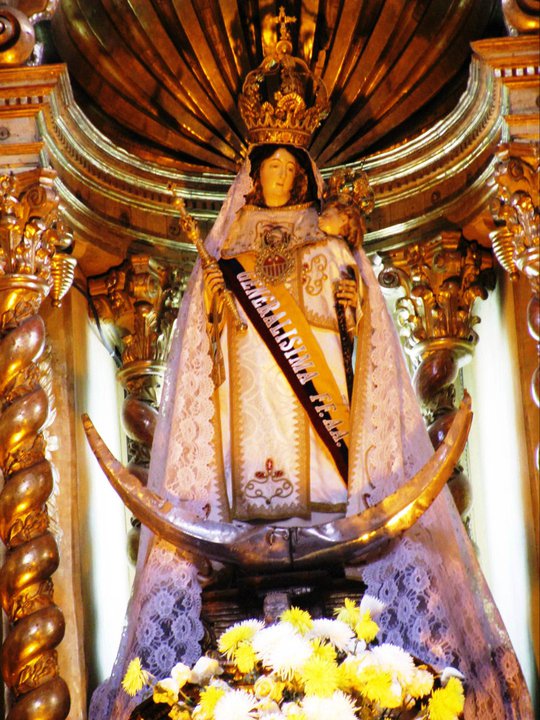
Our Lady of Mercy, General of the Ecuadorian Armed Forces. This statue is in Quito, Ecuador. 24 September commemorates the foundation of the Mercedarians.
[Nobility.org note: The most current historical dates and facts can be found in the Mercedarian history book, available here:http://orderofmercy.org/charism/survey/ ]
On 10 August, 1223, the Mercedarian Order was legally constituted at Barcelona by King James of Aragon and was approved by Gregory IX on 17 January, 1235. The Mercedarians celebrated their institution on the Sunday nearest to 1 Aug. (on which date in the year 1233 the Blessed Virgin was believed to have shown St. Peter Nolasco the white habit of the order), and this custom was approved by the Congregation of Rites on 4 April, 1615 (Anal. Juris Pont., VII, 136).
On 22 Feb., 1696, it was extended to the entire Latin Church, and the date changed to 24 September. The Mercedarians keep this feast as a double of the first class, with a vigil, privileged octave, and proper Office under the title: “Solemnitas Descensionis B. Mariæ V. de Mercede”. Our Lady of Ransom is the principal patron of Barcelona; the proper Office was extended to Barcelona (1868) and to all Spain (second class, 1883). Sicily, which had suffered so much from the Saracens, took up the old date of the feast (Sunday nearest to 1 Aug.) by permission of the Congregation of Rites, 31 Aug., 1805 (double major), Apparition of Our Lady to St. Peter Nolasco in the choir of Barcelona, on the Sunday after 24 Sept. In England the devotion to Our Lady of Ransom was revived in modern times to obtain the rescue of England as Our Lady’s Dowry.
F.G. HOLWECK (Catholic Encyclopedia)
Mercedarians (Order of Our Lady of Mercy)
Foundation of the Order of Mercy, part of the center altarpiece of the Cathedral of Barcelona.
A congregation of men founded in 1218 by St. Peter Nolasco, born 1189, at Mas-des-Saintes-Puelles, Department of Aude, France. Joining Simon de Montfort’s army, then attacking the Albigenses, he was appointed tutor to the young king, James of Aragon, who had succeeded to the throne after the death of his father, Pedro II, killed at the battle of Muret. Peter Nolasco followed his pupil to his capital, Barcelona, in 1215. From the year 1192 certain noblemen of that city had formed a confraternity for the purpose of caring for the sick in hospitals, and also for rescuing Christian captives from the Moors.
Mercedarian Fathers ransoming Christan captives from the Muslims.
Peter Nolasco was requested by the Blessed Virgin in a vision to found an order especially devoted to the ransom of captives. His confessor, St Raymond of Pennafort, the canon of Barcelona, encouraged and assisted him in this project; and King James also extended his protection. The noblemen already referred to were the first monks of the order, and their headquarters was the convent St. Eulalie of Barcelona, erected 1232. They had both religious in holy orders, and lay monks or knights; the choir monks were clothed in tunic, scapular, and cape of white. These religious followed the rule drawn up for them by St Raymond of Pennafort. The order was approved, first by Honorius III and then by Gregory IX (1230), the latter, at the request of St Raymond Nonnatus presented by St Peter Nolasco, granted a Bull of confirmation and prescribed the Rule of St. Augustine, the former rule now forming the constitutions (1235). St. Peter was the first superior, with the title of Commander-General; he also filled the office of Ransomer, a title given to the monk sent into the lands subject to the Moors to arrange for the ransom of prisoners. The holy founder died in 1256, seven years after having resigned his superiorship; he was succeeded by Guillaume Le Bas.
La Mercè Basilica, in Barcelona, where her incorrupt body reposes on the right side of the altar.
The development of the order was immediate and widespread throughout France, England, Germany, Portugal, and Spain. As the Moors were driven back, new convents of Mercy were established. Houses were founded at Montpelier, Perpignan, Toulouse, and Vich. The great number of houses, however, had a weakening effect on the uniformity of observance of the rule.
To correct this, Bernard de Saint-Romain, the third commander general (1271), codified the decisions of the general chapters. In the fourteenth century, disputes arose from the rivalry between the convents of Barcelona and Puy, and from the discord between the priests and knights, which ended in the latter’s suppression, disturbed the peace of the order. Christopher Columbus took some members of the Order of Mercy with him to America, where they founded a great many convents in Latin America, throughout Mexico, Cuba, Brazil, Peru, Chile, and Ecuador. These formed no less than eight provinces, whereas they only had three in Spain and one in France. This order took a very active part in the conversion of the Indians.
At the beginning of the seventeenth century Father Gonzales, who had made his profession in the convent of Olmedo in 1573, conceived the idea of a reform, at that time necessary. The commander-general, Alfonso de Montoy, at first supported this scheme, but ended by opposing it. In this undertaking, Gonzales was assisted by the Countess of Castellan, who obtained for him the necessary authorization from Clement VIII, and presented him with three convents for the reformed monks (at Viso, Diocese of Seville; Almoragha, Diocese of Cadiz; Ribas). The reform was confirmed at the provincial chapter of Guadelajara in 1603.
Father Gonzales took the name of John Baptist of the Blessed Sacrament, and died at Madrid in 1618. Paul V approved his reform in 1606; in 1621 Gregory XV declared it independent of the monks of the Great Observance. Their convents formed two provinces,with houses at Madrid, Salamanca, Seville, and Alcalá, with a few foundations in Sicily.
St. Peter Nolasco
Father Antoine Velasco founded a convent of nuns of Our Lady of Mercy at Seville in 1568, of which the first superioress was Blessed Ann of the Cross. This foundation had been authorized by Pius V. The reformed branch also established houses of barefooted nuns, or Nuns of the Recollection, at Lura, Madrid, Santiago de Castile, Fuentes, Thoro, and elsewhere. The female tertiaries go back to the very beginning of the order (1265). Two widows of Barcelona, Isabel Berti and Eulalie Peins, whose confessor was Blessed Bernard of Corbario, prior of the convent there, were the foundresses.
They were joined by several companions, among them St. Mary of Succour (d. 31 Decemb., 1281), the first superior of the community. Blessed Mary Anne of Jesus (d. 1624) founded another community of tertiaries, under the jurisdiction of the reformed branch. The Order of Mercy of late years has much decreased in membership. The restoration of the reformed convent at Thoro, Diocese of Zamora, Spain, is worthy of note (1888). At present the order has one province and one vice-province in Europe, and four provinces and two vice-provinces in America, with thirty-seven convents and five to six hundred members. The Mercedarian convents are in Palermo; Spain; Venezuela (Caracas, Maracaibo); Peru (Lima); Chile (Santiago); Argentina (Cordova, Mendoza); Ecuador (Quito); and Uruguay. The Mercedarians of Cordova publish “Revista Mercedaria”.
Mercedarias Descalzas Convent in Santiago de Compostela, Spain
Besides the founder, St. Peter Nolasco, the following illustrious members of the order may be mentioned: St. Raymond Nonnatus (d. 1240), the most famous of the monks who gave themselves up to the work of ransoming captives; Blessed Bernard of Corbario, already mentioned; St. Peter Paschal, Bishop of Jaen, who devoted all his energies to the ransom of captives and the conversion of the Musselmans, martyred in 1300; St. Raymond was a cardinal, as also were Juan de Luto and Father de Salazar. It is unnecessary to enumerate the archbishops and bishops. Writers were numerous, especially in Spain and Latin America in the seventeenth century. To mention only a few: Alfonso Henriquez de Almendaris, Bishop of Cuba, who founded a college for his order at Seville, and from whom Philip III received an interesting report on the spiritual and temporal condition of his diocese in 1623; Alfonso de Monroy, who drew up the constitutions of the reform, and who was a bishop in America; Alfonso Ramón, theologian, preacher, and annalist of his order; Alfonso Velásquez de Miranda (1661), who took a considerable part in political affairs; Fernando de Orio, general of the order, who translated and learnedly commented on Tertullian’s treatise “De Poenitentia”; Fernando de Santiago (1639), one of the favourite preachers of his time; Francisco Henríquez; Francisco de Santa Maria; Francisco Zumel; Gabriel de Adarzo (1674), theologian, preacher, and statesman; Gabreil Tellez (1650), dramatic author; Gaspar de Torrez, Bishop of the Canary Islands; Pedro de Ona, whom Philip III sent on important missions both in America and in the Kingdom of Naples.
Fr. Francisco Zumel Painting by Francisco de Zurbarán
(from: Catholic Encyclopedia)
Start Novena to St. Thérèse of the Child Jesus

I came across a beautiful Novena and wanted to share it with you.
It is a novena to St. Thérèse of the Child Jesus.
Join me in praying this novena from September 23rd to October 1st, her feast day.
…and tap into the power of the Little Flower.
St. Thérèse is awesome! Have you ever noticed how in almost every church you walk into there is a statue, a picture or a stained glass window dedicated to this great Saint?
And yet, she was a cloistered nun, hidden away…. and she died at 24; after a very short life.
But here is the thing that has always intrigued me…
….for some reason, God decided that He was going to make her known throughout the world like no other saint. It is intriguing and amazing.
Novena to St. Thérèse of the Child Jesus
St. Thérèse promised to shower the earth with roses and that’s what she has been doing in Heaven!
And this is why I am inviting you to pray this novena and beg for those “roses”; a symbol of graces to help you with whatever worries and needs you may have.
Nothing is too big or too small for St. Thérèse of the Child Jesus! Click here.
One last thing if I may. Please share this email with your family and friends so they can do this novena too. If you forward this email your friends will also receive the links to the St. Thérèse novena.
Popes Support Private Property, Not Socialism: A Collection of Papal Texts…
by Plinio Correa de Oliveira
Today I fulfill a longstanding promise of providing my readers with a collection of pontifical texts concerning private property. The tumultuous situation of the times had led me to other themes. Now, however, I have the satisfaction of making these golden teachings - so neglected in certain Catholic publications - shine once again by giving them public exposure.
Private property is being presented more and more - in this epoch of hypertrophied concern about the social as a disagreeable and anachronistic privilege to which only a few egotists, insensitive to the misery surrounding them, have obstinately attached themselves.
Is that the thinking of the Church? This question is of capital importance for our public.
In order to answer such questions by the very voice of the Roman Pontiffs, here follow some of their teachings on this matter.
First of all let us consider a question closely related to our topic. I spoke of hypertrophied concern about social issues. This expression may undoubtedly have made some readers shudder. For if this concern corresponds to the general interest, can it really be overdone?
Yes, it can. Its hypertrophy is very harmful to the general interest itself; the Roman Pontiffs called it socialism.
Therefore, the Church undertook "the protection of the individual and the family against a current threatening to bring about a total socialization which in the end would make the terrifying image of the 'Leviathan' become a shocking reality. The Church will fight this battle to the end, for it is a question of supreme values: the dignity of man and the salvation of souls" (Pius XII, Radiomessage to the Katholikentag of Vienna, September 14, 1952 - Discorsi e Radiomessaggi, vol. XIV, page 314).
Moreover, Pius XII sees total socialization not only as a general catastrophe but also as a maneuver of a privileged minority against the common good: "in attributing to the people as a whole is proper, albeit partial, task of ordering the economy for the future, we are very far from admitting that this charge should be confided to the State as such."
"However, upon observing the proceedings of certain congresses, even Catholic ones, about economic and social matters, one may note an ever growing tendency to call for State intervention so that one has at times, as it were, the impression that this is the only imaginable recourse. There is no doubt, according to the social doctrine of the Church, that the State does have its proper role in the ordering of social life. To fulfill this role, it must even be strong and have authority. But those who continuously invoke its strength and authority, making it responsible for everything, lead the State to ruin and really play the game of certain powerful interest groups. The result is that all personal responsibility in public affairs comes to an end. So when anyone speaks about the State's obligation or negligence, he is, in fact, referring to the obligations or faults of anonymous groups among whom he naturally does not think of counting himself." (Pius XII, Speech of March 7, 1957 to the VII Congress of the Christian Union of Italian Employers and Managers (UCID) - Discorsi e Radiomessaggi, no. XIX, page 30).
For his part, Leo XIII shows that to fight in defense of private property is to favor the most fundamental interests of the people: ". . the socialist theory of collective property must be absolutely repudiated because it is harmful to the very ones whom it seeks to help, contrary to the natural rights of individuals, denaturalizes the functions of the State and disturbs the public peace. Let it therefore be firmly settled that the first foundation to be established for those who sincerely seek the good of the people is the inviolability of private property" (Leo XIII, Encyclical Rerum Novarum, May 15, 1891 - Editora Vozes, Petropolis, page 12).
Socialist equality, regarded by so many as the liberation of the poor was denounced by Leo XIII as the cause of the general misery: "Inasmuch as the Socialists, therefore, disregard care by parents and in its place introduce care by the State, they act against natural justice and dissolve the structure of the home. And apart from the injustice involved, it is also only too evident what turmoil and disorder would obtain among all classes; and what a harsh and odious enslavement of citizens would result! The door would be open to mutual envy, detraction, and dissension. If incentives to ingenuity and skill in individual person were to be abolished, the very fountain of wealth would necessarily dry up and the equality conjured up by the Socialist imagination would, in reality be nothing but uniform wretchedness and meanness for one and all, without distinction" (Leo XIII, Rerum Novarum St. Paul Editions, Boston, Mass., 1942).
One would say that the celebrated Pontiff had foreseen, with an inspired gaze the economic failures of Cuba and the misery of laborers such as those who have risen up in Gdansk and other cities of Poland.
And now to private property. What are its origins?
One of them is the very wages of the worker. To deny property is to deny wages and thus to reduce the worker to slavery. Leo XIII says: "Clearly the essential reason why those who engage in any gainful occupation undertake labor, and at the same time the end to which workers immediately look, is to procure property for themselves and to retain it by individual right as theirs and as their very own. When the worker places his energy and his labor at the disposal of another, he does so for the purpose of getting the means necessary for livelihood. He seeks in return for the work done; accordingly a true and full right not only to demand his wage but to dispose of it as he sees fit. Therefore, if be saves something by restricting expenditures and invests his savings in a piece of land in order to keep the fruit of his thrift safer, a holding of this kind is certainly nothing else than his wage under a different form; and, on this account, land which the worker thus buys is necessarily under his full control as much as the wage which he earned by his labor. But, as is obvious, it is clearly in this that the ownership of movable and immovable goods consists" (Leo XIII, Rerum Novarum, St. Paul Editions, Boston. Mass., 1942, pages 7-8).
Another way in which ownership is legitimately established, is by the appropriation of things that have no owner. Pius XI states: "Titles for the acquisition of property are the takeover of things without an owner... in fact, he who takes possession of something abandoned or with no owner, does injustice to no one, however much some may say to the contrary" (Pius XI, Encyclical Quadragesimo Anno, May 15, 1931 - Editora Vozes, Petropolis, pages 21-22).
As a consequence, man may also legitimately become the owner of land. Leo XIII teaches: "Man by his intelligence grasps innumerable things, adding and linking the future with the present; in addition, he is master of his own actions; furthermore, under the direction of the eternal law and the universal government of Divine Providence, he is, in a certain way, his own law and his own providence. Wherefore he has the right to choose the things which he considers most apt not only to provide for the present but also for the future. Whence it follows that dominion not only over the fruits of the earth but also over the earth itself must rest in him, since by its fecundity he sees that it is destined to furnish his needs in the future. Man's necessities continuously repeat; satisfied today, they make new demands tomorrow. Therefore, nature necessarily put at his disposal something stable and permanent capable of continually providing him with means. That element can only be the earth, with its ever fruitful resources." (Leo XIII, Encyclical Rerum Novarum, May 15, 1891 - Editora Vozes, Petropolis, p.7).
These considerations have already taken me quite far. The texts that have been cited offer more than sufficient material for reflection. So we shall stop here for now.
(*) The preceding article has been translated and adapted for publication without the author’s revision. American TFP.
Pope says: “There is nothing so sublime as the papacy nor so exalted as the imperial throne”
Pope Innocent II
(Gregorio Papereschi)
Elected 14 Feb., 1130; died 24 Sept., 1143. He was a native of Rome and belonged to the ancient family of the Guidoni. His father’s name is given as John.
The youthful Gregory became canon of the Lateran and later Abbot of Sts. Nicholas and Primitivus. He was made Cardinal-Deacon of the Title of S. Angelo by Paschal II, and as such shared the exile of Gelasius II in France, together with his later rival, the Cardinal-Deacon Pierleone. Under Callistus II Gregory was sent to Germany (1119) with the legate Lambert, Cardinal-Bishop of Ostia. Both were engaged in drawing up the Concordat of Worms in 1122. In the following year he was sent to France.
On 14 Feb., 1130, the morning following the death of Honorius II, the cardinal-bishops held an election and Gregory was chosen as his successor, taking the name of Innocent II; three hours later Pietro Pierleone was elected by the other cardinals and took the name of Anacletus II. Both received episcopal consecration 23 Feb.; Innocent at Santa Maria Nuova and Anacletus at St. Peter’s. Finding the influential family of the Frangipani had deserted his cause, Innocent at first retired into the stronghold belonging to his family in Trastevere, then went to France by way of Pisa and Genoa.
There he secured the support of Louis VI, and in a synod at Etampes the assembled bishops, influenced by the eloquence of Suger of St-Denis, acknowledged his authority. This was also done by other bishops gathered at Puy-en-Velay through St. Hugh of Grenoble. The pope went to the Abbey of Cluny, then attended another meeting of bishops, November, 1130, at Clermont; they also promised obedience and enacted a number of disciplinary canons.
Stained glass of Pope Innocent II in Notre-Dame-du-Fort in Étampes, France. Photo taken by GFreihalter.
Through the activity of St. Norbert of Magdeburg, Conrad of Salzburg, and the papal legates, the election of Innocent was ratified at a synod assembled at Würzburg at the request of the German king, and here the king and his princes promised allegiance. A personal meeting of pope and king took place 22 March, 1131, at Liège, where a week later Innocent solemnly crowned King Lothair and Queen Richenza in the church of St. Lambert. He celebrated Easter, 1131, at St-Denis in Paris, and 18 October opened the great synod at Reims, and crowned the young prince of France, later Louis VII. At this synod England, Castile, and Aragon were represented; St. Bernard and St. Norbert attended and several salutary canons were enacted. Pentecost, 1132, the pope held a synod at Piacenza.
The following year he again entered Rome, and on 4 June crowned Lothair emperor at the Lateran. In 1134 the pope, at the request of the emperor, ordered that Denmark, Sweden, Norway, and the island of Greenland should remain under the jurisdiction of Hamburg (Weiss, “Weltgeschichte”, V, 21). On the departure of the emperor, innocent also left and went to Pisa, since the antipope still held sway in Rome. At Pisa a great synod was held in 1135 (Hefele, “Conciliengeschichte”, V, 425) at which were present bishops of Spain, England, France, Germany, Hungary, etc. In the spring of 1137 Emperor Lothair, in answer to the repeated entreaties of the pope, began his march to Rome. The papal and imperial troops met at Bari, 30 May, 1137, and the pope was again conducted into Rome. Anacletus still held a part of the city, but died 25 Jan., 1138. Another antipope was chosen, who called himself Victor IV, but he, urged especially by the prayers of St. Bernard, soon submitted, and Innocent found himself in undisturbed possession of the city and of the papacy.
To remove the remnants and evil consequences of the schism, Innocent II called the Tenth Ecumenical Council, the Second of the Lateran. It began its sessions on 4 April, 1139 (not 8 April, as Hefele writes, V, 438). One thousand bishops and other prelates are said to have been present. The official acts of Anacletus II were declared null and void, the bishops and priests ordained by him were with few exceptions deposed, the heretical tenets of Pierre de Bruys were condemned.
Thirty canons were made against simony, incontinence, extravagance in dress among the clergy, etc. Sentence of excommunication was pronounced upon Roger, who styled himself King of Sicily, and who after the departure of the emperor had invaded the lands granted to Rainulph. In 1139 St. Malachy, Archbishop of Armagh, left Ireland to visit the shrine of the Apostles. Innocent received him with great honours and made him papal legate for all Ireland, but would not grant him permission to resign his see in order to join the community of St. Bernard at Clairvaux (Bellesheim, “Ireland”, I, 356). In the East, Innocent II curbed the pretension to independence on the part of William, Patriarch of Jerusalem and of Raoul, Patriarch of Antioch (Hergenröther, II, 410).
 After the death of Alberic, Archbishop of Bourges, in 1141, Louis VII of France wanted to secure the nomination of a man of his own choice whom the chapter did not consider the fit person, and they chose Pierre de La Châtre, whereupon Louis refused to ratify the election. The bishop-elect in person brought the matter to Rome, and Innocent, finding after due examination that the election had been made according to the requirements of ecclesiastical law, Confirmed it and himself gave the episcopal consecration.
After the death of Alberic, Archbishop of Bourges, in 1141, Louis VII of France wanted to secure the nomination of a man of his own choice whom the chapter did not consider the fit person, and they chose Pierre de La Châtre, whereupon Louis refused to ratify the election. The bishop-elect in person brought the matter to Rome, and Innocent, finding after due examination that the election had been made according to the requirements of ecclesiastical law, Confirmed it and himself gave the episcopal consecration.
When Pierre returned to France, Louis would not allow him to enter his diocese. After useless negotiations Innocent placed France under interdict. Only during the reign of the next pope was the interdict removed and peace restored.
In the trouble between Alfonso of Spain and Alfonso Henríquez who was making Portugal an independent monarchy and had placed his kingdom under the protection of the Holy See, Innocent acted as mediator (Aschbach, “Gesch. Span. u. Port.”, 1833, 304, 458). Ramiro II, a monk, had been elected King of Aragon. Innocent II is said to have given him dispensation from his vows, though others claim that this is a calumny spread by the enemies of the pope (Damberger, “Weltgeschichte “, VIII, 202).
Several minor synods were held during the last few years of the life of Innocent, one at Sens in 1140, at Vienne in 1141 and in the same year at Vienne and Reims; in 1142 at Lagny, in which Ralph, the Duke of Vermandois is said to have been excommunicated by the legate Yvo of Chartres for having repudiated his lawful wife and married another (Hefele, V, 488). A synod was held under the presidency of the papal legate 7 April, 1141, at Winchester; and 7 Dec., 1141, at Westminster. During his pontificate Innocent II enrolled among the Canonized saints of the Church: at Reims in 1133, St. Godehard, Archbishop of Reims; at Pisa in 1134, St. Hugo, Bishop of Grenoble, who had died in 1132, and had been a zealous defender of the rights of Innocent; at the Lateran in 1139, St. Sturmius, Abbot of Fulda (Ann. Pont. Cath., 1903, 412). To St. Norbert, the founder of the Premonstratensians, he granted in 1131 a document authorizing him to introduce his rule at the cathedral of Magdeburg (Heimbucher, “Die Orden u. Congr.”, II, Paderborn, 1907, 55); to St. Bernard he in 1140 gave the church of Sts. Vincent and Anastasius near Rome (ibid., 1, 428); he also granted many privileges to others. His letters and privileges are given in Migne (P. L., CLXXIX). According to the “Liber Pontificalis” (ed. Duchesne, II, 379) he ordained eighteen deacons, twenty priests, and seventy bishops.
Santa Maria in Trastevere, Rome.
He was buried in St. John Lateran, but seven years later was transferred to Santa Maria in Trastevere. Innocent II is praised by all, especially by St. Bernard, as a man of irreproachable character. His motto was: “Adjuva nos, Deus salutaris noster”. The policy of Innocent is characterized in one of his letters: “If the sacred authority of the popes and the imperial power are imbued with mutual love, we must thank God in all humility, since then only can peace and harmony exist among Christian peoples. For there is nothing so sublime as the papacy nor so exalted as the imperial throne” (Weiss, V, 25).
BRISCHAR in Kirchenlex., s. v.; DENZINGER, Enchiridion (10th ed., Freiburg, 1907), 167. See also under ANACLETUS II.
FRANCIS MERSHMAN (Catholic Encyclopedia)
Tuesday, September 22, 2015
Saint John Bosco to his boys: “Avoid bad companions even more than poisonous snakes…”
By Ben Broussard

Nestled in the foothills of the Italian Alps, the village of Becchi became home to Giovanni (John) Melchior Bosco on August 16, 1815. This little baby would grow to be one of the leading lights during the troubling times of the nineteenth century. His profound influence can be seen even in our own day as we mark 200 years since his birth. Let us now look back on the life of Saint John Bosco, the heroic Apostle of Youth.
Forming a Conqueror
When John Bosco was but two years old, his father, Francesco Bosco, passed away. His widowed mother, known by all as “Mama Margherita,” worked tirelessly for the survival of her family. The time after the Napoleonic wars was marked by famines and hardship. Young John Bosco and his two older brothers worked long hours each day in the fields. Mama Margherita made sure every activity began and ended with prayer. The mother’s influence assured each of her children thanked God for providing the little they possessed.
As a child, John Bosco enjoyed visiting the fairs and festivals of nearby villages. The magic shows and acrobatics greatly impressed him. He watched carefully and learned all he could from these traveling entertainers.
By the time he was nine years old, young John Bosco could be seen putting on his own shows. Tightrope walking, juggling, sleight of hand and puppetry attracted many of his contemporaries, sometimes 100 boys at a time watching. The price of admission to these shows? “Let us say Our Lady’s rosary,” said the young showman; his audience knelt and gladly obeyed. Showing zeal for his friends, he led prayers before and after each performance, and insisted each boy frequent the sacraments.
The First of Many Dreams
It was at this time that John Bosco had the first of his prophetic dreams, which he later wrote down:
“I found myself in a large courtyard where there were many boys. Seeing that some were blaspheming, I rushed into their midst raising my voice and using my fists to quiet them. At that point, a Man appeared who said, ‘Not with blows, but with kindness will you win these boys. Set to work to instruct them on the wickedness of sin and the excellence of virtue.’ Thinking he was asking the impossible as I was only nine at the time, I asked Him who He was. He replied, ‘I am the Son of her whom your mother taught you to salute three times a day. Ask her My Name.’
“There then appeared a radiant and majestic woman, and the Man brought me to her. When she took my hand, I then saw the boys disappear and in their place all types of beasts: tigers, lions, bears, wolves. She said, 'Be humble, determined and strong. You must do for my sons what you will now see happen to these animals.' I then looked again and instead of fierce animals I now saw gentle lambs. I understood nothing of it, and asked the lady to explain. She placed her hand on my head and said, 'In good time, my son, you will understand everything.'”
This dream marked John Bosco for the rest of his life. He told all of the details at the breakfast table the next morning. Members of the family each offered their own explanations, but Mama Margherita listened quietly. After pondering a few moments, her only words were, “Who knows, but this may mean that some day my Johnnie will be a priest of God.”
Following a Higher Calling
The dreams of John Bosco came and went, but his gifts and talents soon manifested themselves to one and all. When walking home after a mission in a nearby town, he saw a priest walking at a distance. Catching up to him, the two conversed at length. John Bosco impressed the priest with his incredible memory when he recited the entire sermon given that evening word for word. The next week the priest began giving him private instruction.
Due to family hardship, John went to live and work on the farm of Signor Moglia. A priest who was related to this family came to stay one summer, and was so impressed with the bright boy he began giving John daily lessons. The same continued for two years, and every Sunday John walked to the nearby parish church to instruct the local boys and continue his one-man shows.
Concerned with his lack of schooling, a generous uncle provided for John Bosco to begin attending the local high school in the fall of 1830. At the high school at Castelnuovo this fifteen-year-old lad excelled, despite his lack of formal schooling. This star pupil finished the courses of three academic years by the spring of 1831. The local tailor at Castelnuovo took John into his home, where the young man learned this trade that would serve him well in the future.
In the fall of 1831, John began seminary studies at Chieri. His living conditions with the owners of a local restaurant taught him to be on his guard against bad company. John’s deeds by word and example attracted the good and made enemies of the bad, a pattern that would repeat itself throughout his adult life.
The remainder of John Bosco’s school days passed quickly, and after a brief six years he completed all of the seminary courses. Filled with humility as the day of his ordination approached, he wrote down the following:
“No priest goes either to heaven or to hell alone. Faithful or unfaithful, he carries many with him. When it is a question of the salvation of souls I will always be prepared to humble myself, to suffer, and to act.”
On June 5, 1841, the Archbishop of Turin ordained John Bosco, at the age of twenty-six, to the sacred priesthood. At his first Mass, he later recounted asking especially for the gift of efficacy in word in order to do good to souls. The people afterward addressed him by his Italian title for the first time, and the name of Don Bosco would one day be known the world over.
Given his choice of assignments, Don Bosco opted to remain at Turin for further studies. The Industrial Revolution marked the city during this period. Thousands were moving in from the countryside looking for work in the factories. Boys as young as ten years old could be found working long shifts and living on the streets.
On the Feast of the Immaculate Conception, Don Bosco saw his sacristan throw a young boy out of the sacristy. Approaching the lad and asking him questions, Don Bosco learned Bartolomeo, an illiterate orphan of fifteen, knew neither his prayers nor catechism. When Mass concluded, the instructions commenced. Bartolomeo returned the next week with six others. Soon growing numbers met every Sunday with Don Bosco teaching these unlearned youth, many of who did not know even the Sign of the Cross.
In Search of a Home
It wasn’t long before Don Bosco had quite the following. His new apostolate became known as the Oratory of St. Francis de Sales, after the great bishop of Geneva whose kindness won souls for Christ. The spiritually starved boys from around Turin and beyond came in increasing numbers to learn the beautiful truths of the Catholic Faith. Don Bosco’s fellow priest, Father Borel, soon joined him, and the two began giving evening classes for the boys working in the factories.
When Don Bosco completed his studies, the Oratory was forced to move. His rowdy crowd of youths met at St. Philomena’s Hospice in a small room converted to a chapel. Months later his group of boys met weekly at a chapel in the local cemetery. When this option ceased, the wandering Oratory three hundred strong met weekly for treks into the countryside. With the approach of winter, rooms were rented, but the Oratory was forced to move three more times.
Don Bosco gave every hour of every day to his boys. He visited them at work, counseled them in their problems, nursed them in illness and attended their every need, spiritual and temporal.
Opposition to Don Bosco’s work came from all sides. Newspapers carried reports decrying the Oratory as a menace to public order. Politicians called for an end to these gatherings of street urchins with this poor priest. The clergy complained to the Archbishop of Turin, begging him to reassign Don Bosco to parish work. Don Bosco labored on in spite of every hardship, persevering in the work he had begun.
Building on a Dream
Don Bosco’s certainty of success was given him in a dream. He wrote: “Our Lady pointed out to me the spot where three martyrs were put to death. She told me her desire to be honored in a special way in this holy place. Placing her foot on the very spot the first martyr fell, I then saw a numberless throng of boys come forward. A huge church appeared on the spot Our Lady pointed out. Priests and brothers soon came to share in the work.”
The dream started to become reality when a man rented a large decrepit shack to Don Bosco. At last the Oratory had a home, which would become permanent.
Tragedy struck when Don Bosco collapsed after a strenuous day, stricken with pneumonia. Over the coming weeks his condition worsened, and the Last Sacraments were administered. His boys kept a round-the-clock vigil, praying the rosary continuously for his recovery. Asked to pray for his own cure, he replied, “Only if it be God’s will.” It seems this was enough, for in two weeks’ time he was back to his labors.
Don Bosco’s exemplary life and steadfast zeal for souls did not fail to attract. His spiritual director, Saint Joseph Cafasso, prudently instructed him in matters great and small. Through the influence of this holy priest, Don Bosco formed his personal motto: “Give me souls. Away with the rest.”
As if in answer to this motto, boys flocked to the new oratory, and in 1851 Don Bosco purchased the building he had rented. The following year it was torn down and a dormitory was constructed in its place. This oratory continued to grow, and within a few years was followed by others. These schools gained the reputation of being known as the best schools for boys in all Italy. Mama Margherita was now the mother of hundreds as she joined
Don Bosco in his efforts until her passing ten years later.
Though the hostile authorities prohibited sales of Catholic textbooks, Don Bosco wrote his own. Teaching trades and practical skills, the saintly teacher never failed to reinforce the lessons of Catholic teaching in every activity.
First Fruits
No greater example of Don Bosco’s influence exists than the Oratory’s “star” pupil, Dominic Savio. Arriving in December, 1854, at the age of twelve, Dominic quickly endeared himself to the other boys and was a model of every virtue. His very presence discouraged foul language and bad behavior.
The young lad consecrated himself to Our Lady and expressed a desire for the priesthood. He instructed his peers in catechism and insisted on frequenting the sacraments. Falling ill in the year 1856 and ordered home by his doctors, the lad stated prophetically, “I will never come back.” On his deathbed the following March, his face filled with joy as he shouted, “What a beautiful sight I see!” He then breathed forth his pure soul to God. Don Bosco recorded all the facts of his student’s short life, and Saint Dominic Savio would become the patron saint and model for boys all over the world.
Fighting the Church’s Battles
With the rise of the revolutionary anti-Catholic government in the 1860s, Don Bosco faced battles on many fronts. Multiple times the government made attempts to expel all religious orders. His city of Turin saw agitation from Protestant pamphleteers, their erroneous tracts against the papacy and the Eucharist slipped into the pages of Catholic publications.
Whenever walking anywhere, alone or with his boys, Don Bosco always carried pamphlets defending the Church. His publication Cattólico Provveduto was widely circulated in Turin. Readers of his stories of apologetics and sound spiritual advice abounded. To gain support for the Catholic press, he exhorted his readers:
“My dear friends, the enemies of Catholicism are doing their utmost to undermine our beliefs. We exhort and urge all who cherish the Faith of their fathers to join us in defending this most precious gift of God.”
With these writings Don Bosco made many enemies, but a faithful friend was sent to help. One night when coming home, a huge gray dog appeared in his path. The wolf-like animal became friendly and walked him home, but vanished as soon as he entered the Oratory’s gate. Grigio, as Don Bosco called him, would appear when needed to offer protection.
The Waldensians, a Protestant sect in Turin, attacked Don Bosco vehemently for his public defense of Church teaching. These heretics even paid a group of assasins to ambush Don Bosco after nightfall. A man armed with a club followed after Don Bosco down a dark street as he hastened to reach the Oratory. Atop a hill there was another group of men waiting for him. As he dodged his attackers, Grigio appeared growling and sprang at the assailants. Terrified, they all ran off into the darkness. Grigio faithfully escorted his master back to the Oratory.
Even given this fierce opposition, Don Bosco only increased his efforts, issuing strong defenses of the papacy, the Real Presence, Our Lady’s perpetual virginity and the need for sacramental confession. His rebuttals, published in newspapers, silenced the heretics and brought back to the fold many wayward sheep. His efforts were hailed by fervent Catholics around Europe, in particular by the reigning pope, Pius IX.
The Salesians Spread His Work
At Don Bosco’s first visit to Rome, Pius IX expressed enthusiasm at the idea of a new religious order for the formation of youth. Plans were drawn up and the Congregation of Saint Francis de Sales, or Salesians, took form in 1859. A female branch of the order, the Daughters of Mary, Help of Christians, was founded in 1872.
Missionaries were sent to Argentina starting in 1875, followed quickly by other countries. Within a short time, Salesians counted twenty-six houses in the Americas and thirty-six houses in Europe. Requests poured in to meet the saintly founder of the new order. Don Bosco made trips throughout Italy, France and Spain. The heaven-sent dreams of Don Bosco became a reality.
Our Lady Calls Her Son Home
Years of sacrifice and heroic effort in his apostolic labors took their toll. By 1883 Don Bosco’s sight had nearly failed. Father Michael Rua succeeded him as head of the Salesians. By 1887 his legs lacked strength for walking, and by the end of the year his sufferings prevented him from offering Holy Mass. Though his body was weak, his mind remained as strong as ever. Confined to his room, for the last time he heard the confessions of his boys and gave them fatherly counsel.
The final agony began on January 29, 1888, feast of his patron Saint Francis de Sales. A long line formed of priests and students to receive a final blessing. As the bells tolled the morning Angelus on January 31st, John Bosco breathed his last, surrounded by his faithful sons.
His final words uttered days before remained fresh in their minds: “Tell my boys I am waiting for them in heaven.”
His 4 Counsels
In order for his boys to persevere in the path of good, Saint John Bosco gave the following counsels to his students:
1) Receive the sacraments often.
2) Be devoted to the Blessed Virgin.
3) Consider bad reading worse than the plague.
4) Avoid bad companions even more than poisonous snakes.
Saint Michael Novena to End on Sept. 29th
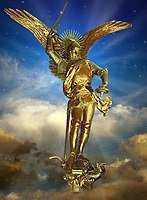
Saint Michael, pray for us! (Say for nine consecutive days)
Saint Michael the Archangel, loyal champion of God and His Catholic people, I turn to thee with confidence and seek thy powerful intercession. For the love of God, Who hast made thee so glorious in grace and power, and for the love of the Mother of Jesus, the Queen of the Angels, be pleased to hear my prayer.
Thou knowest the value of my soul in the eyes of God. May no stain of evil ever disfigure its beauty. Help me to conquer the evil spirit who tempts me. I desire to imitate thy loyalty to God and Holy Mother Church and thy great love for God and men. And since thou art God’s messenger for the care of His people, I entrust to thee this special request:
(Here mention your request.)
Saint Michael, since thou art, by the will of the Creator, the powerful intercessor of Christians, I have great confidence in thy prayers. I earnestly trust that if it is God’s holy will, my petition will be granted.
Pray for me, Saint Michael, and also for those I love. Protect us in all dangers of body and soul. Help us in our daily needs. Through thy powerful intercession, may we live a holy life, die a happy death and reach Heaven where we may praise and love God with thee forever. Amen.
Monday, September 21, 2015
Our Lady will hear you – Send prayer intentions to Fatima
Click to send your name and prayer intentions to Fatima. We will deliver them for you.

Do you wish you could go to Fatima to bring the Blessed Mother all those petitions that are closest to your heart…?
…but just can’t board a plane right now?
We will do it for you!
Every year, for the eve of the Miracle of the Sun on October 12, America Needs Fatima sends a special envoy to Fatima to do just that: bring the petitions of ANF members and friends to the Shrine of Fatima, to the very spot where Our Lady appeared.
And every year our envoy is proud to bring petitions from friends across America that fill a suitcase!
Send in your name, prayers and petitions, and we guarantee their physical delivery to Fatima.
Each of our envoys carries out the mission of bringing your petitions to Fatima with heartfelt zeal. Here at ANF we are ever so grateful for each and every one of our members and friends, and consider it a real privilege to bring your prayers to our Queen and Mother at the very spot where she appeared in 1917 in Fatima, Portugal.
There, our envoy will also light 13 massive candles (the date on which Our Lady consistently appeared) for your intentions. He will also say a Rosary for those same intentions at the Little Chapel of the Apparitions.
Click to send your name and prayer intentions to Fatima. We will deliver them for you.
Saint Thomas of Villanova -- September 22
Saint Thomas of Villanova
Educator, philanthropist, born at Fuentellana, Spain, 1488; died at Valencia, 8 September, 1555. Son of Aloazo Tomas Garcia and Lucia Martínez Castellanos, the saint was brought up in the practices of religion and charity. Every Friday his father was wont to give in alms all the meal he earned at the mill, besides his usual daily dole of bread. On great feast-days he added wood, wine, and money; while to poor farmers he loaned money and seed.
On the death of her husband, Lucia continued the usual alms, and supplied indigent maidens in the neighbourhood with clothing and money. When sixteen tears old, Thomas entered the University of Alcalá, where, after proceeding master of arts and licentiate in theology, he filled the chair (1514) of arts, logic, and philosophy. Among his auditors were the famed scholars Ferdinand de Encina and Dominic Soto. With Alcala, however, ended his university associations, he having declined the chair of natural philosophy at Salamanca, where he joined the Augustinians in 1516, his vows following a year later, and his ordination to priesthood the year after; his first Mass was celebrated at Christmas, 1518. At Salamanca Convent Thomas was given the class of scholastic theology because of his attachment for books, chiefly the Lombard and St. Thomas, and his exemplary life.
Preaching in the pulpits of Spain was soon added to his duties, among other places at Valencia, the field of his later trials, and Valladolid, seat of the imperial Court and residence of the Emperor Charles V when on his visits to the Low Countries. In this last-named city St. Thomas was named by the emperor his court preacher, and one of his councillors of state. Rarely, however, did the saint pay visits of ceremony to the then master of Europe, though his written correspondence with Charles, who held his opinions in high esteem, was voluminous. Towards the close of his life, while at Valencia, he had all the emperor’s letters destroyed; his own letters to the emperor, however, are now stored at Simancas.
Apart from these burdens Thomas held many offices of trust in his order, e.g. as convent prior in various cities, among others at Valladolid in 1544, the very year he was called to the See of Valencia. Moreover, he was twice provincial-prior, first of Andalusia and Castile in 1527, then six years later of Castile alone, whence the first mission band of his brethren was sent across the Atlantic in 1533 to establish houses of their order in Mexico.
On 5 Aug., 1544, he received his nomination to the Archbishopric of Valencia, a post that for well-nigh a hundred years had witnessed no bishop in residence, an appointment that was confirmed by Paul III. Previously St. Thomas had declined the See of Granada, offered him by the emperor, while that of Valencia he accepted only through obedience to his superiors. He was consecrated in the church of his order at Valladolid by Juan, Cardinal Tavera de Pardo, Archbishop of Toledo. On his entrance to his see on 1 Jan., 1545, of which he was thirty-second bishop and eighth archbishop, St. Thomas opened his career as legislator and philanthropist, which won for him the titles of “Almsgiver”, “Father of the Poor”, and “Model of Bishops”, given him at his beatification in 1618 by Paul V. During his eleven years of episcopal rule his most noteworthy deeds were as follows: a visitation of his diocese, opened a few weeks after entrance into his see. Among other amendments he inhibited his visitators from accepting any gifts whatever. He then held a synod, the first at Valencia for many years, whereby he sought to do away with a number of abuses, as bloodshed, divorce, concubinage, and many excessive privileges or unreasonable exemptions; he abolished the underground prisons; rebuilt the general hospital at Valencia which had just been destroyed by fire; founded two colleges, one for young ecclesiastics, the other for poor students; laboured for the conversion of the nuevos Cristianos, whose profession of Christianity was largely mere outward show; established a creche near his palace for foundlings and the offspring of indigent parents; had Mass said at early hours for the working-classes; and in brief, by statutes, by preaching, and by example, strove to reform the morals of churchman and layman.
 Towards the poor especially his heart was ever alive with pity; to them his palace gate was always open; daily he had a repast for every poor person that applied for help, as many even as four to five hundred thus getting their meals at his hands. In every district of the city he had almoners appointed with orders especially to search out the respectable persons who shrank from asking alms; these he had supplied with money, food, clothing, while as to indigent workmen, poor farmers, and mechanics, he replenished their stock and brought them tools, thus putting them in the way of making a living. His whole life as replete with acts of practical kindness. He spent his spare time chiefly in prayer and study; his table was one of simple fare, with no luxuries.
Towards the poor especially his heart was ever alive with pity; to them his palace gate was always open; daily he had a repast for every poor person that applied for help, as many even as four to five hundred thus getting their meals at his hands. In every district of the city he had almoners appointed with orders especially to search out the respectable persons who shrank from asking alms; these he had supplied with money, food, clothing, while as to indigent workmen, poor farmers, and mechanics, he replenished their stock and brought them tools, thus putting them in the way of making a living. His whole life as replete with acts of practical kindness. He spent his spare time chiefly in prayer and study; his table was one of simple fare, with no luxuries.
His dress was inexpensive; he mended with his own hands whatever needed repairs. Numberless are the instances of St. Thomas’ supernatural gifts, of his power of healing the sick, of multiplication of food, of redressing grievances, of his ecstasies, of his conversions of sinners. He was taken ill in August, 1555, of angina pectoris, of which he died at the age of 67, at the termination of Mass in his bedroom. His last words were the versicles: “In manus tuas, Domine”, etc.; his remains were entombed at the convent Church of Our Lady of Help of his order outside the city walls, whence later they were brought to the cathedral. The saint was of well-knit frame, of medium height, with dark complexion, brilliant eyes, ruddy cheeks, and Roman nose. He was beatified by Paul V (7 Oct., 1618), who set his feast-day for 18 Sept., and canonized by Alexander VII on 1 Nov., 1658.
Various reasons are given to account for St. Thomas’ non-appearance at the Council of Trent, among them that he was ill, unable to stand the fatigue of travel; that his people would not brook his absence; and that the emperor was unable to do without his aid at home. The writings of St. Thomas, mainly sermons, are replete with practical norms of mystic theology. Some twenty editions have been published, the best and most complete being probably that of Manila, 1882-1884, in 5 tomes.
Edward G. Dohan (Catholic Encyclopedia)
Saturday, September 19, 2015
Why Saint Joan of Arc was a knight, not a “knightess”
By Plinio Corrêa de Oliveira
Statue of St. Joan of Arc in Chinon
All this is very beautiful, but there is something even more beautiful that they asked me to make explicit. But what can I say? Infinite things are ineffable. Thepulchrum [beauty] of an ideal is reflected in the soul of the one who fights for it.
For her standard, Joan had God the Creator emblazoned between two adoring angels bearing lilies.
Take, for example, Saint Joan of Arc. Everyone sees the pulchrum of her figure. What is it? It is the pulchrum of a virgin who does the will of God. And since God wants to make a fighter out of her, He draws extraordinary strength from her virginal weakness and with it defeats stronger men.
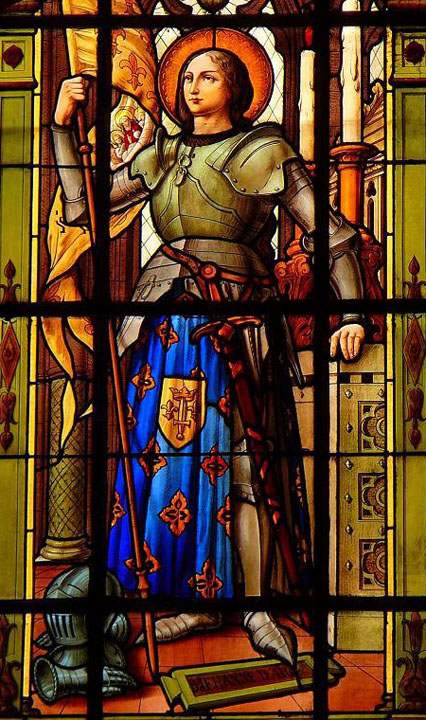 What is this in the soul of St. Joan of Arc? She is a knight, not a ‘knightess.’ She is a fragile, fine and delicate maiden as behooves the feminine sex. However, she is a warrior, and a great warrior! How does one explain this?
What is this in the soul of St. Joan of Arc? She is a knight, not a ‘knightess.’ She is a fragile, fine and delicate maiden as behooves the feminine sex. However, she is a warrior, and a great warrior! How does one explain this?
The explanation is in the equilibrium of the qualities that exist in her. She has the strength of a man, the delicacy of a woman, the force of a virgin who knows how to defend herself and has the necessary integrity of soul.
But above all, she is a soul to whom God spoke through voices; a soul that at a certain moment, so to speak, heard the voice of God. Such a light overshadowed her that one has the impression that St. Joan of Arc radiates light at all moments of her life.
Even in the tragic moment when the flames began to spread on the wood pile to which she was tied and which finally burned her, she shone even more than the very flames. It was a reflection of the great love of God that moved her soul.
(Excerpt from a Saint of the Day of Friday, Feb. 16, 1990.)
Friday, September 18, 2015
Will the Pope Dispel Moral Confusion at Synod?
Catholics are asking Pope Francis to reaffirm traditional Church teaching on marriage and family at the Synod in Rome next month. A coalition of 58 pro-family groups is promoting a worldwide petition called Filial Appeal to His Holiness Pope Francis on the Future of the Family. So far the petition has been signed by 8 cardinals, 170 bishops and more than 625,000 concerned Catholics from a total of 160 countries.

Prince Bertrand of Orleans-Braganza
"Catholics in general are deeply perplexed," said HIRH Prince Bertrand of Orleans-Braganza, one of the prominent petition signers. "As the sexual revolution continues to claim the innocence of our children and rip the family apart, we find shepherds within the sacred walls of Holy Mother Church who issue statements that contradict and undermine 2,000 years of sound Church teaching."
Some prelates slated to attend the upcoming Synod have openly challenged Church moral doctrine. For example, in a recent interview with La Civilta Cattolica, a Jesuit periodical, Cardinal Christoph Schönborn of Vienna spoke approvingly of homosexual unions. “We can and we must respect the decision to form a union with a person of the same sex," the prelate said, "[and] to seek means under civil law to protect their living together with laws to ensure such protection.”
However, many high-ranking Church leaders disagree with Cardinal Schönborn, a delegate at the upcoming Synod.
Cardinal Raymond Burke declared in a video interview released by Polonia Cristiana that, "It is heresy to teach that homosexual relations...are not disordered, to teach that they have positive elements."
In the same documentary video, Archbishop Jan Pawel Lenga added: "... if we believe that homosexuals brought something into the Church, it is nothing but debauchery and licentiousness. ... The Holy Scripture beautifully says that such people will not get into Heaven."
Meanwhile, concerned Christian families -- including non-Catholic ones -- who signed the Filial Appeal petition are praying that Pope Francis will set the record straight, dispel the confusion, and reaffirm the Church's unwavering fidelity to divine and natural law.
Prince Bertrand of Orleans-Braganza concluded: "In times like these, we must recall God's promise to Saint Peter, 'That thou art Peter; and upon this rock I will build my church, and the gates of hell shall not prevail against it' (Matt. 16:18). It is our duty to remain faithful, knowing that God has already won against the forces of darkness."
On September 29, the feast of Saint Michael the Archangel, the worldwide pro-family petition to Pope Francis will be officially presented in the Vatican.
Those who wish to sign the petition may still do so, here:
http://www.tfpstudentaction.org/sign-petition-to-pope-francis.html




